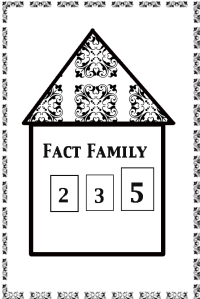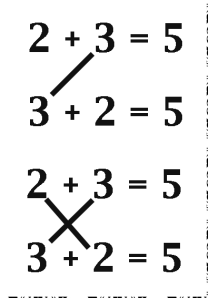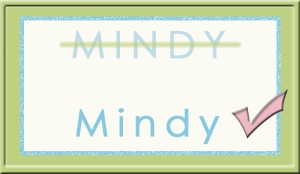 Forming letters for the first time is no easy task. Kids are still trying to understand the concept of print generally at the same time they are expected to write their names. As with most things that are difficult concepts, experience helps our brains to understand at a quicker pace and then really hold on to what we have learned. (Be sure to read “A Favor to All KDG Teachers” for more handwriting instructions.) Here are a few ideas that you can use to give your child some solid name-writing fun experiences:
Forming letters for the first time is no easy task. Kids are still trying to understand the concept of print generally at the same time they are expected to write their names. As with most things that are difficult concepts, experience helps our brains to understand at a quicker pace and then really hold on to what we have learned. (Be sure to read “A Favor to All KDG Teachers” for more handwriting instructions.) Here are a few ideas that you can use to give your child some solid name-writing fun experiences:
1.) Finger Paint or Watercolors: Use a sharpie on big, craft paper to form the letters of their name. Let them use yellow finger paint to trace over top of the letters. If they are ready for the next step, put a paint brush in their hands and let them use yellow watercolor paint.
2.) Yarn Art: Write your child’s name on a large piece of paper. Use brightly colored yarn. Mix: 2 T of white glue and 2 T of water. Soak the yarn. Squeeze out excess liquid. Allow your child to place the yarn over top of the letters you wrote to form their name. Let dry thoroughly and hang where it can be admired. (Yarn Art recipe taken from Let’s Make Memories by Gloria Gaither and Shirley Dobson.)
3.) Playdough: What’s better than Playdough? You can buy it or make your own. It’s so much fun and yet exercises fine motor skills. First you demonstrate how to make the letter. Be sure to make the sound as you are forming the letter. Then allow them to follow. Before long they will have spelled their whole name.
4.) Sand: Now, if you live by the beach this can be a field trip, otherwise a flat box of sand will do the trick. Make the sand a little moist so the letters will form easily be easily read. Give them the letter verbally and let them practice drawing each letter. If you notice they are forming the letter incorrectly, take the time to show it correctly. It’s important to catch it right away. It’s hard to re-teach when there’s a learned bad habit.
4.) Legumes: Use good white glue (glue sticks won’t hold) to form one letter at a time. Allow your child to use beans to form each letter. Use a different color bean for each new letter. You could even practice patterns using red and green beans. This takes time so you may want to break this project up depending on the length of the name. The name Jennifer could take quite a bit of time as opposed to Bob. Just remember that this is supposed to be fun. Better to make it into segments, like a letter a day, than to try to push through in one session.
5.) Sugar Cookies: Now, I know what most of you are thinking. The cookies will be distorted and not really look like it should anyway. (Well, maybe most of you are smarter than me but I just figured this trick out two years ago.) My new way of cutting cookies is to roll out all the dough on the cookie sheet and bake. It’s one big cookie. When you pull the cookie out of the oven, cut your cookies out with the shaped cookie cutters. Press down and shake the cutter just a tad. Leave on the cookie sheet until it has completely cooled. The cookie is the exact shape of the cutter with no distortion. Just be sure to cut immediately after removing from the oven. If you wait too long, it will just break and crack.
6.) Bath Tub Crayons: Some people may hate these, but I loved them and so did my kids. I wouldn’t just use them at any time but if I knew I was going to be cleaning the tub the next day anyway, I would break out the crayons and let them practice while in the tub. Have them write a few letters and then let them “paint the tub red”.
Learning can be good quality fun, great for Mommy, Daddy or Grandparent activities. Take lots of pictures because these days are fleeting. Let me know if you had fun doing them. I would love to hear your stories.














